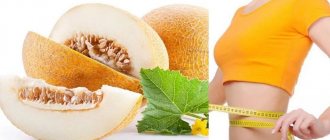It is unlikely that anyone will give up sweets of their own free will. In pursuit of a healthy lifestyle, many people switch to sweeteners, of which there are quite a few on sale. One of these is sorbitol. By the way, the story of its appearance is completely unrelated to the pursuit of a slender body. It was invented amid a post-war sugar shortage. Sorbitol is a natural sweetener. It is slightly less sweet than sugar, but does not increase glucose levels and is low in calories. It is obtained as a result of corn processing. Despite the sweetness, the substance is not a carbohydrate.
| Calories per 100 g, (kcal): | 366 |
| Protein per 100 g, (g): | 0 |
| Fat per 100 g, (g): | 0 |
| Carbohydrates per 100 g, (g): | 91.6 |
| Glycemic index: | 9 |
What are the benefits of sorbitol?
The sweetener is completely absorbed by the digestive tract and helps reduce the consumption of B vitamins by the body.
Sorbitol has high nutritional value and can be used as a mild laxative. By using a substitute, you can improve intestinal function and normalize microflora. It is absorbed by the body by 98%. Does not promote the development of harmful microorganisms, therefore does not harm tooth enamel. Widely used to cleanse the gallbladder and liver. It can be included in a low-carb diet since sorbitol contains no carbohydrates.
Sorbitol is recommended to be included in the diet in the treatment of urolithiasis.
General health benefits, indications for use
This substance has many beneficial properties. It:
- normalizes intestinal function;
- does not pose a danger to teeth , as it does not cause caries;
- performs choleretic functions;
- does not irritate mucous membranes;
- does not have a negative effect on the liver;
- Helps preserve B vitamins;
- very rarely causes an allergic reaction;
- helps cope with intoxication (including alcohol);
- retains its characteristics when heated to high temperatures.
Is sorbitol good for weight loss?
Despite the strong belief that sorbitol is a fat burner, this is absolutely not the case. Indeed, it is used in dietary nutrition due to its lower calorie content compared to sugar. On the other hand, the lower sweetness of the substance may force it to be added to products in larger quantities, and then there will be no benefit from using sorbitol.
It is permissible to replace sugar during weight loss in an amount of no more than 50 g per day.
And to feel the sweetness in tea, instead of 2 tablespoons of sugar, you will have to add about 5 tablespoons of sorbitol, for this reason its use in dietary nutrition is in doubt.
Beneficial properties of sorbitol
The most useful property of sorbitol is considered to be its ability to reduce the calorie content of foods (compared to sugar), without compromising their taste. Diabetics can safely consume sweets made with sorbitol - they are not able to worsen their well-being. When consumed in reasonable quantities, sorbitol helps reduce the consumption of vitamins B1 and B6, since it does not require their participation in the absorption process; it also helps improve the microflora of the gastrointestinal tract.
Sorbitol has detoxification, laxative and choleretic properties, helps reduce the acidity of gastric juice when interacting with other components.
Sorbitol makes medications more effective. The substance also has the properties of an emulsifier and thickener.
The compound has a positive effect on intestinal motility and helps prevent the development of gastrointestinal diseases. Sorbitol is an excellent remedy for preventing slagging in the body.
Sorbitol also prevents the development of many dental problems. It strengthens enamel and teeth, prevents the development of carious processes. People who replace sugar products with sorbitol products are less likely to visit dentists.
Sorbitol promotes weight loss and is completely safe for pregnant and nursing mothers.
How to take sorbitol for medicinal purposes
Sorbitol is widely used to remove toxins and cleanse the liver and the entire body. To do this, before eating (10 minutes), a small amount of the substance is dissolved in a glass of warm mineral water. The second glass with the same composition is consumed 20 minutes later. Then you should take a horizontal position and place a heating pad on the right hypochondrium for a couple of hours. The procedure is called blind probing.
Before the procedure, it is recommended to prepare the body. A week before the procedure, you should stop drinking alcohol and remove fatty and smoked foods. It is recommended to consume more foods containing fiber. During cleansing, it is unacceptable to consume protein; it is best to eat apples and drink juice from them all day. After cleansing, a feeling of lightness appears in the stomach, fatigue disappears. Under no circumstances should the body be cleansed with sorbitol if there is an ulcer, gallstones or sand. Such treatment is unacceptable for diabetes mellitus.
To cope with constipation as quickly as possible, you should immediately eat 40-50 g of the substance. This will stimulate quick and soft bowel movements.
On the basis of this substance and rose hips, a so-called tubage is carried out, aimed at eliminating stagnation of bile and increasing immune strength. To prepare the mixture, about 60 g of berries are poured into 500 ml of boiling water in a thermos and left overnight. In the morning, pour 200 ml of the drink and add 30 g of sorbitol to it and drink it on an empty stomach. After half an hour, drink the remaining rosehip tincture, without any sweetener. This cleaning is carried out after 2-3 days, the entire course consists of 6 sessions.
It is unacceptable to use this recipe in the presence of heart failure and during exacerbation of gastrointestinal pathologies.
What is food sorbitol: instructions for use
Structural formula and preparation
Sorbitol, or, as it is also called, sorbitol or glucite, is a hexahydric alcohol in which the aldehyde group is replaced by a hydroxyl group. It is made from corn starch, and to be even more precise, sorbitol is made from glucose through bioorganic synthesis. Its younger brother, the sugar substitute xylitol, also has this structure.
Sorbitol is an organic compound found naturally in algae and the fruits of some plants (stone fruits). Above in the picture you see the process of converting glucose into D-sorbitol.
Appearance, taste
Industrially synthesized sorbitol is similar in appearance to regular granulated sugar: solid white, odorless crystals, only larger in size.
It has a pleasant taste and dissolves well in water, it is heat stable, so baked goods or other dishes with it that undergo heat treatment do not lose their sweetness.
Calorie content of sorbitol
However, for those who hope to lose weight with the help of this sweetener, there is one very serious “but”: the calorie content of food sorbitol is not much lower than that of refined sugar and amounts to 260 kcal per 100 grams. But the sweetness level is inferior and is approximately 40% of regular sugar. Accordingly, in order to give a dish or drink a familiar taste, you will need no less sorbitol than granulated sugar, so such a replacement will not have a positive effect on your waist.
Glycemic and insulin index of sorbitol
Sweetener E 420 has an extremely low glycemic index. Sorbitol has only 9 units, while sugar has about 70, and fructose has about 20. However, this does not mean that sorbitol does not increase glucose levels at all. It is the low GI that is the reason for the frequent use of sorbitol to make chocolate, cookies and candies for diabetics. Sorbitol has an insulin index of 11, which means it can increase insulin levels. Want to know more about chocolate for diabetes? Read the interesting article “Diabetic chocolate: benefits and harms” . This sweetener is practically not absorbed by the body and is excreted almost unchanged through the intestines. The most famous brand that produces sorbitol is Novasweet. If the use of sugar in diabetes is clearly prohibited, then which is better, fructose or sorbitol, you need to decide with your doctor, although both sweeteners can be found in candies and other sweets for diabetics and I I wouldn’t recommend them, but more on that later.
What is the difference between sorbitol and xylitol
What these two sweeteners have in common is that they are natural. However, xylitol has more sweetness than sorbitol. Some scientists still recommend giving preference to xylitol, for the following reasons:
- the substitute stimulates the production of bile, just like sorbitol;
- cleanses the body;
- harmless to tooth enamel;
- reduces the amount of saturated fatty acids.
Both sweeteners have a mild laxative effect. They are used in the nutrition of diabetics and people with pancreatic diseases.
On the other hand, it is still very early to talk about the benefits of this or that substance, since scientific research and tests have not been carried out on the human body.
Side effects of sweetener
In principle, I have already talked about the negative aspects of using sorbitol, but let’s repeat again about these side effects:
- weakness
- nausea
- diarrhea
- bloating
- in large doses increases blood sugar and insulin
- allergic reactions and individual intolerance
The daily dose should not exceed 30-40 g per day. As you can see, this is not so much, especially if you use the sweetener not only in products containing it, but also in its pure form, so an overdose can occur already at 45-50 g.
Sorbitol harm and contraindications
Sorbitol has a number of contraindications for use.
It should not be used if you have individual fructose intolerance or if you have stones in the gall bladder or ducts. The substitute should not be used in the diet if there are problems with the excretory systems or if irritable bowel syndrome is present. If you exceed the recommended daily dose, you may experience dizziness, skin rash, flatulence and tachycardia. You should not constantly use sorbitol in your diet for more than 4 months in a row. Sorbitol, when used for a long time and in a volume of more than 50 g per day, can cause pain, and in diabetics it can provoke diabetic retinopathy.
Overdose and drug interactions
Cases of overdose are observed when there is a clear violation of the permissible daily amount. Then digestive disorders and other undesirable symptoms develop:
- headaches;
- feeling dizzy;
- frequent loose stools;
- irritable bowel syndrome;
- diabetic type retinopathy;
- neuropathy.
To date, there have been no cases of interaction between Sorbitol and other drugs. Therefore, it should be taken simultaneously with any medications, regardless of the duration of the course and dosage.
Xylitol or sorbitol: what to choose
Speaking about sorbitol, one cannot help but recall another organic sweetener - xylitol, which I already wrote about in the article “Xylitol: benefits and harms”. It is produced in a similar way and is a pentahydric alcohol. The calorie content of xylitol is not much lower than that of sugar and even higher than that of sorbitol, as much as 3.7 kcal per 1 gram, so it is also not suitable for weight loss.
Xylitol has a pronounced anti-caries effect, so it can often be found in chewing gum and dragees. Like sorbitol, it is laxative, but less so. The harm and benefits of xylitol and sorbitol are comparable. Which one to choose should only be decided with your attending physician if there are specific medical indications, since neither one nor the other sweetener will be able to reduce the calorie content of the diet. Therefore, the answer to this question can be: “There is not much difference between sorbitol and xylitol.”










